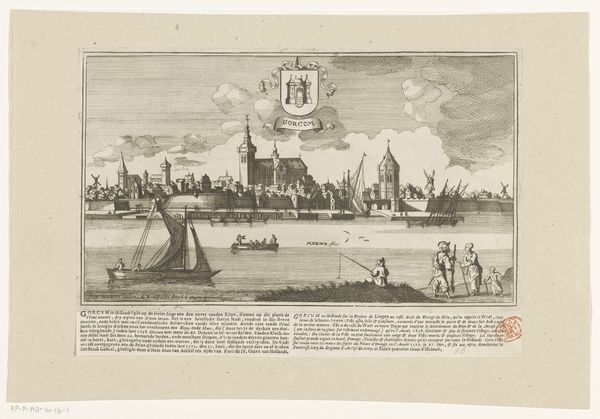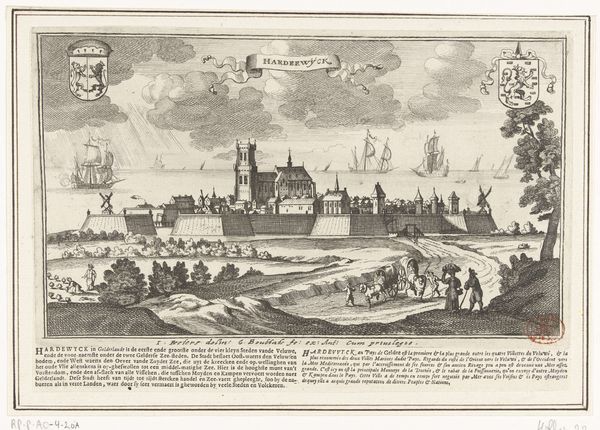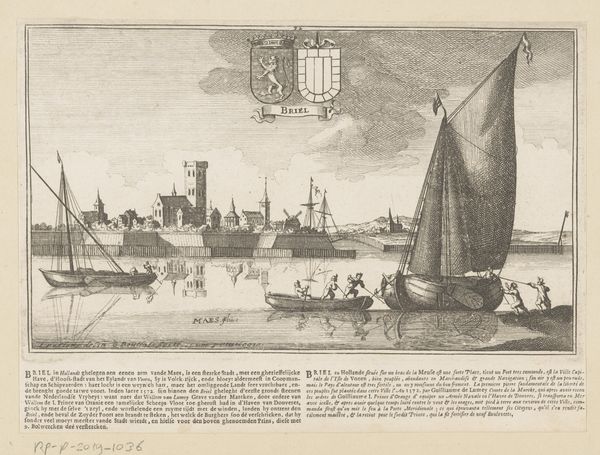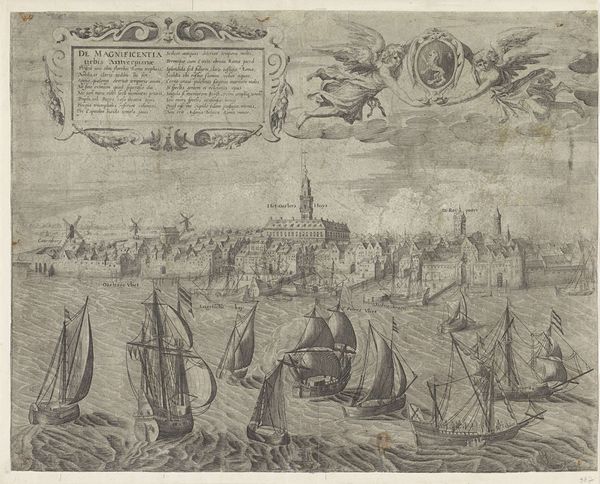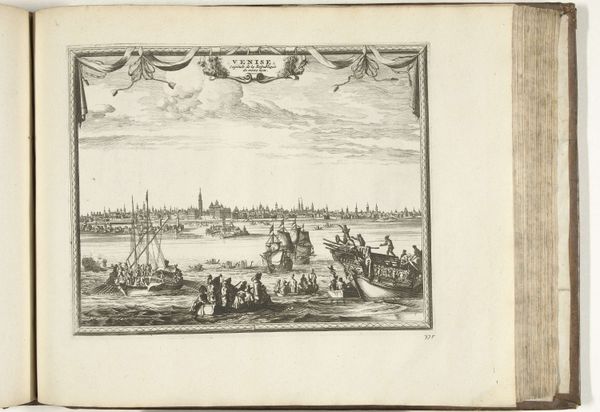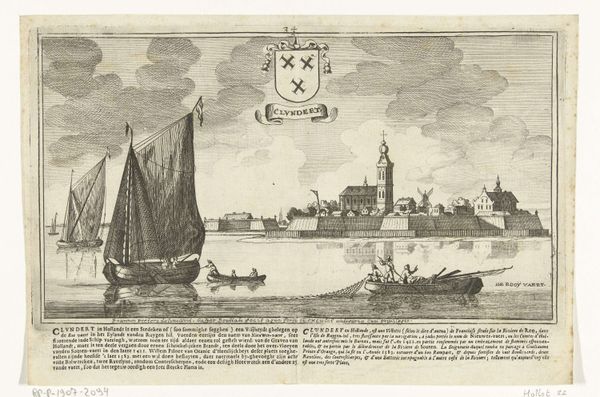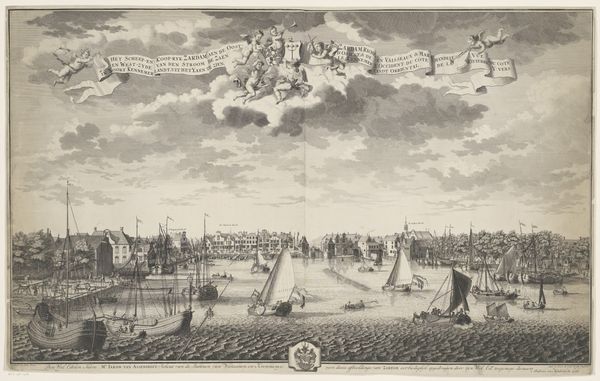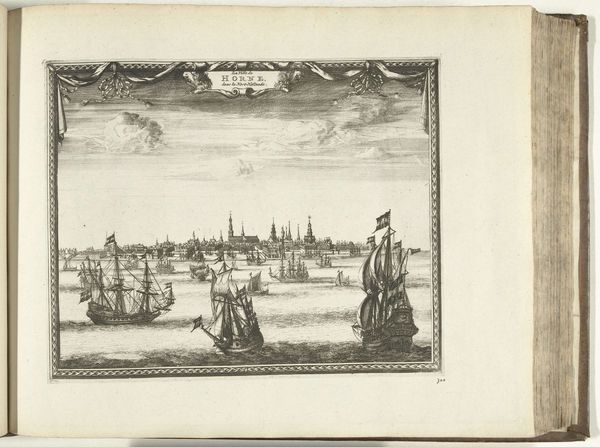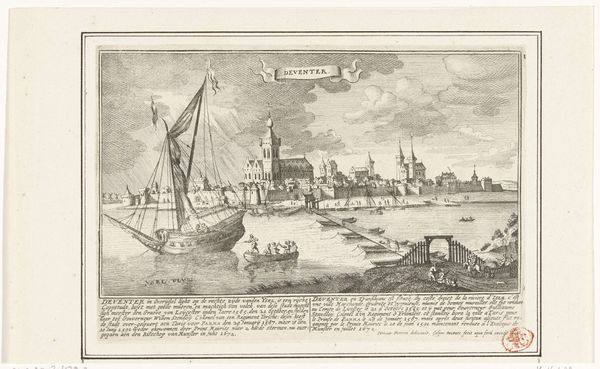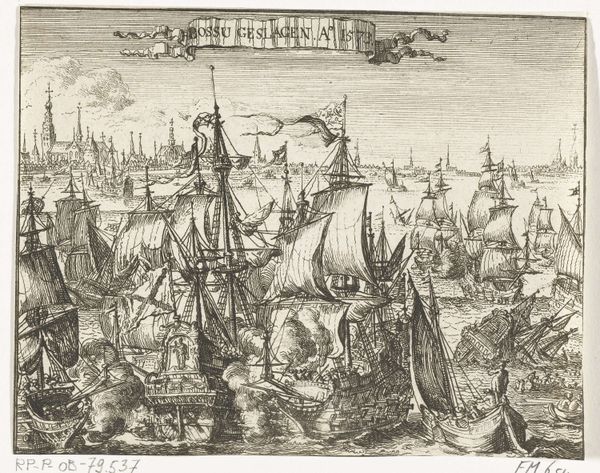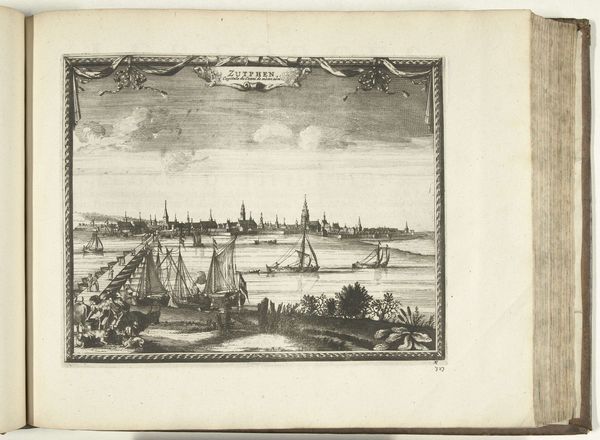
print, engraving
#
dutch-golden-age
# print
#
landscape
#
cityscape
#
engraving
Dimensions: height 176 mm, width 249 mm
Copyright: Rijks Museum: Open Domain
Curator: "Gezicht op Dordrecht," or "View of Dordrecht," dating back to approximately 1675. Gaspar Bouttats captured this cityscape using engraving techniques, creating a striking print that's currently held at the Rijksmuseum. What's your immediate take? Editor: It's instantly serene, isn't it? Despite the business of a harbor scene, the light almost stills the water. Everything reflects—sky, architecture, the vessels themselves. I feel drawn into that quiet moment in a bustling trade city. Curator: Exactly! It’s that very stillness within activity that gets me. Bouttats, with his keen eye, wasn't just showing us Dordrecht; he was showing us its soul. The composition, divided by the river Merwede, frames the city with those dominant sailing vessels and the figures engaging on the shoreline. The heraldic symbol at the top seems to bestow some degree of municipal power. Editor: Ah, symbols! Those boats aren't merely transport, they're archetypes. The larger one, with its imposing sail, carries a narrative of grand mercantile voyages, linking Dordrecht to a wider world. And then that little coach making its way across the water—it evokes the vulnerability and human ingenuity necessary for transit. And the text… What's your interpretation? Curator: The text serves a clear promotional intent. It touts the town's virtues, from its location at the confluence of major rivers to its importance in trade. I am sure it helped spread the name of the town back in the 17th century. What do you make of those workers struggling to bring goods to the shore? Editor: To me, those figures anchor the scene—literally. Their toil forms the bedrock upon which the city's grandeur rests. It's a timeless symbol of human effort, transformed into permanence, much like how this engraving captures a specific Dordrecht moment in eternal form. The engraver managed to give a rather romantic tone to what certainly was quite rough work. Curator: True. It’s a potent reminder that every city, every civilization, rests upon the labors of countless hands. That reflection, if I can put it that way, might make for a slightly more satisfying view. Editor: Yes, it definitely offers a more complete reflection of what might be the heart of any great metropolis—constant movement toward transformation. Thanks for this quiet journey!
Comments
No comments
Be the first to comment and join the conversation on the ultimate creative platform.
